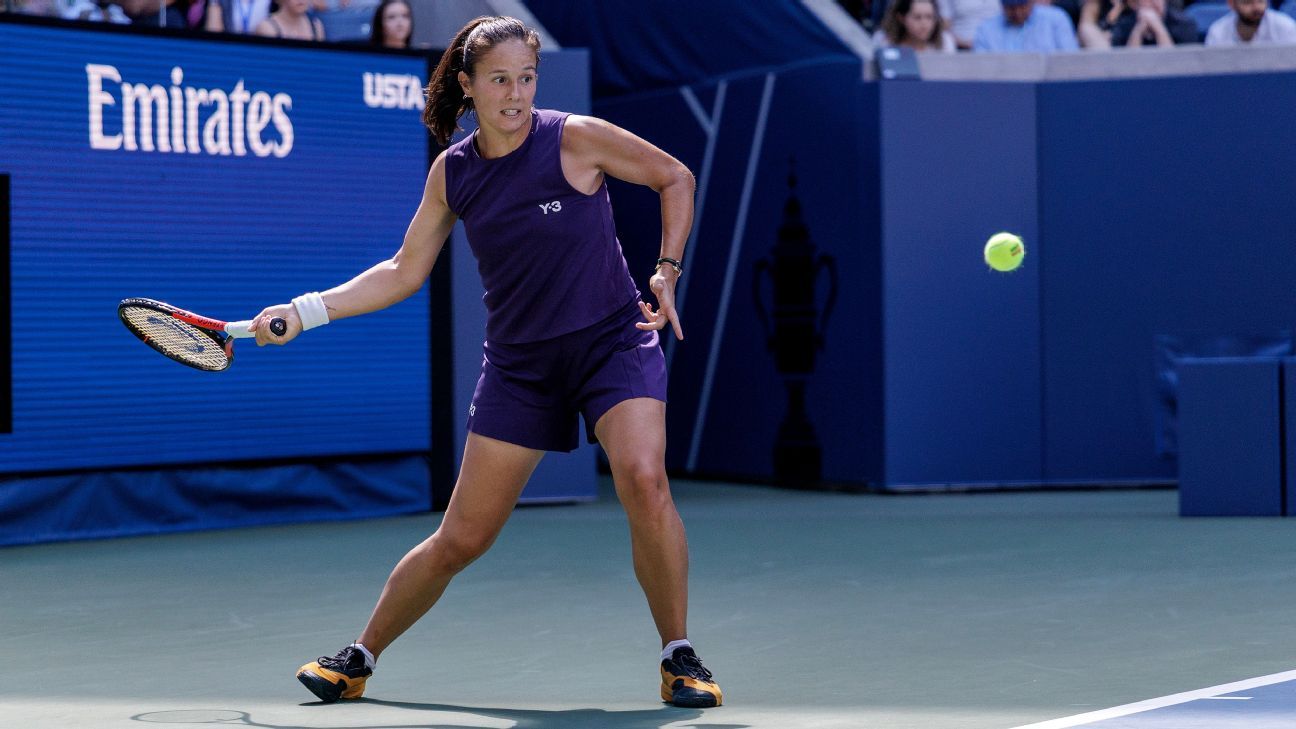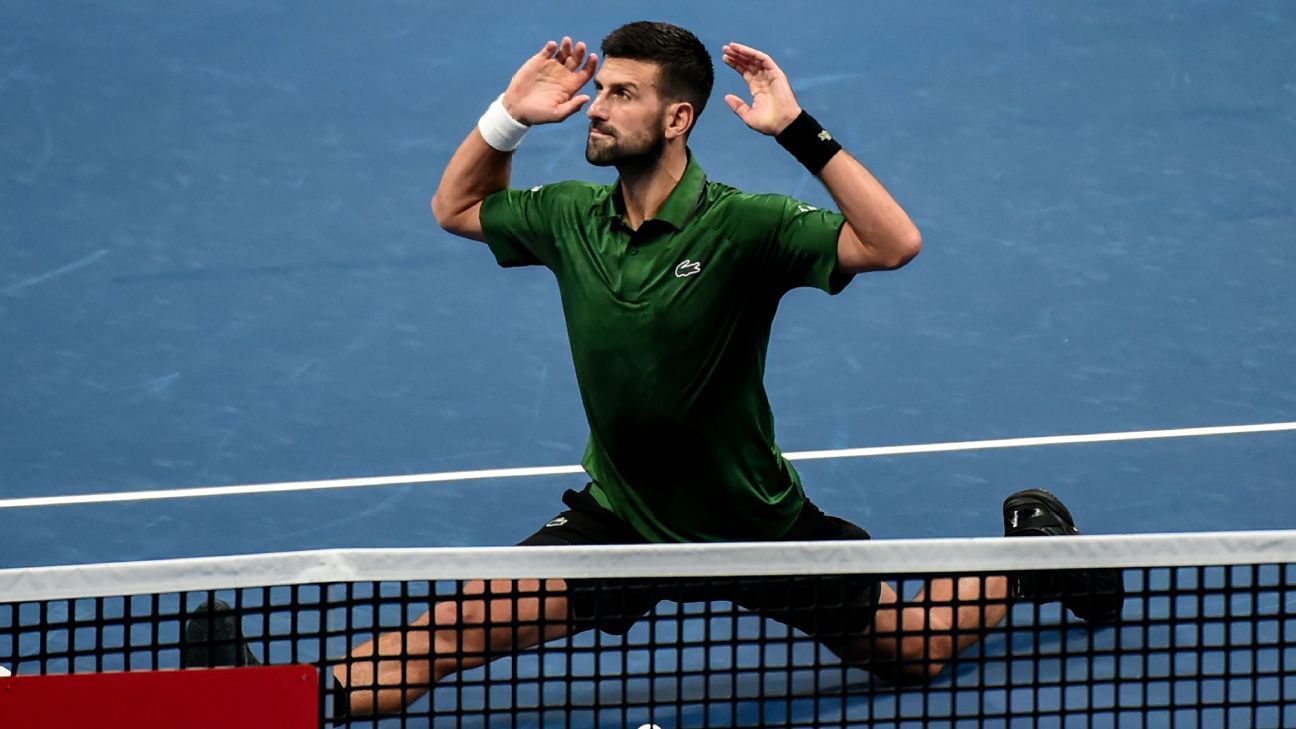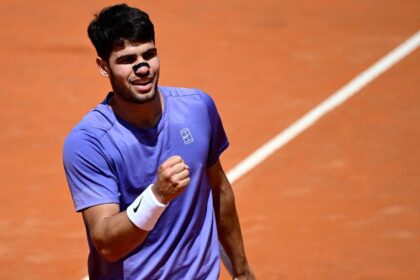The Exhausting Tennis Season: When Will There Be a Break?
The 2024 professional tennis season officially ended on December 22nd, when Joao Fonseca was crowned champion at the ATP Next Gen Finals in Saudi Arabia by defeating Learner Tien. The 2025 season began on December 27th with the United Cup in Australia. Fonseca and Tien returned to the court on December 30th for tournaments in Australia and Hong Kong, respectively.The short break between events has intensified criticism of the schedule. Players like Alex de Minaur and Iga Swiatek have expressed their exhaustion and criticized the intensity of the schedule, which includes high-level tournaments with little rest time. Several tennis players, including Frances Tiafoe, Danielle Collins, Jack Draper, and Daria Kasatkina, ended their season early due to injuries and mental fatigue.I don’t know how the ’25 season starts in ’24. It’s a joke.
Jordan Thompson
As the 2025 season comes to an end, the conversation about the duration and intensity of the tennis season will continue. The key question is: Will there be any changes in the near future?The truth is that I’ve hit a wall and can’t go on. I need a break. A break from the monotonous daily routine of life on the circuit, the suitcases, the results, the pressure, the same faces (sorry, girls), everything that this life entails. The calendar is too much, mentally and emotionally I am at a breaking point and, sadly, I am not alone.
Daria Kasatkina

For Fritz, this meant about three weeks between the end of his 2024 season and the start of the 2025 season. He returned home at the end of November and had to travel to Australia on December 21st. Fritz highlights the need for training during that time.There is no off-season, and if you’re a top player, you actually have even less of an off-season. If the season ended in Paris [at the beginning of November] like it does for most players, then you have a month and a half before the season starts, maybe even a little more, I think maybe an extra week, but if you play the Tour Finals and the Davis Cup, you’re actually adding three more weeks, and then, if you play the United Cup like me, because you’re a top player, it also starts earlier.
Taylor Fritz
Many players take this time to implement technical changes or changes in their coaching staff, which makes it a crucial period. However, the question arises as to whether this is more important than resting and recovering after a physically demanding season.The off-season is your time to train, so if I have three weeks, I take one week [to relax or go on vacation] and that’s it. I have one week off all year. It’s absurd.
Taylor Fritz
For some, the off-season, however brief, is one of the few moments they can spend at home. This is especially true for Australians, who spend most of the season living out of a suitcase.
For me, when I go back to Australia, I just want to go to the beach, relax, take two weeks off from the rackets. But I still have to do a lot of physical things to stay in shape. It’s literally three weeks before you go back into tournament mode. You can’t afford any slip-ups with that amount of free time physically.
Jordan Thompson

Swiatek lost in her next match, then reached the quarterfinals in Wuhan before failing to get out of the group stage at the WTA Finals. The WTA and others in the sport have repeatedly pointed to extended 1000-level tournaments as part of how they could guarantee equal prize money at tournaments with their male counterparts.The WTA, with all these mandatory rules, made it quite crazy for us. I don’t think any top player can achieve this, playing all six 500 tournaments. It’s simply impossible to fit it into the calendar.
Iga Swiatek
Gauff, did not disagree with that argument, but said it was “impossible” to meet all the requirements in a given year. Gauff played in three 500-level tournaments in 2025, as did Sabalenka, Swiatek and Anisimova. Keys played in four. Swiatek played 80 matches this season. Sabalenka appeared in 76, Gauff in 65, Anisimova in 63 and Keys in 53. The condition of the best players was on display at the Shanghai Masters in October. Many complained about the brutal heat and humidity and others felt the weight of the long season. Carlos Alcaraz withdrew before the tournament began due to a left ankle injury. Jannik Sinner retired from his third-round match due to cramps. Djokovic vomited during his round of 32 match and needed treatment for a back injury during his semi-final defeat. The final featured Valentin Vacherot, then ranked 204th in the world and the ninth alternate in the rankings, against his cousin Arthur Rinderknech, then ranked 40th. An incredible story, no doubt, but perhaps not the title clash the ATP was hoping for at one of its flagship events.I always hear shouts for more prize money, more prize money, and this is what the circuit has to [do] — to increase the prize money, they have had to extend the duration of these tournaments. So, what do you want?
Anne Keothavong

Brad Stine, Tommy Paul’s coach, acknowledges that the debate about the length of the season is not new. While Stine believes that the ATP and WTA should get rid of the “mandatory” distinction in tournaments and ensure that there is one or two weeks of rest after each Grand Slam, he also believes that players should be less “paranoid” about losing ranking points and skipping tournaments when they feel they need a break.I’m really not a fan of that. I don’t know why they had to make it even longer. Well, I know why they did it: they can sell tickets for an extra day.
Jessica Pegula
In addition, he believes that many of the players undermine their concerns by playing in high-income exhibitions during the off-season, or other breaks in the calendar. Alcaraz, one of the most vocal defenders of the need for a shorter season, played in the lucrative Six Kings Slam in October and is scheduled to play in several other exhibition events in December.Nobody is forced to play. You can take time off whenever you want to take time off.
Brad Stine
Fritz, when asked what should be changed, replied that the season needs to be shortened. He added that he didn’t think any changes were coming.It’s a different format, a different situation playing exhibitions than official tournaments, 15, 16 days in a row, having so much concentration and demanding physically. We’re just having fun for one or two days and playing tennis, and that’s great, and that’s why we choose exhibitions.
Carlos Alcaraz
I don’t think they’re listening to us. I think you have me, Carlos and Sasha [Zverev], I mean, three of the top four players in the world saying that it just needs to be shortened, and there’s really been no conversation about the change.
Taylor Fritz

Djokovic, who has been a staunch critic of the current calendar, acknowledged that it is a “very complex” issue. Ultimately, he said that if the players wanted to see a change, they would simply have to do more and learn the various layers of the tennis ecosystem.One player could be eliminated in the first round, another is lifting the trophy after the final. Finding a solution that works for both ends of that spectrum is never easy, and a calendar cannot be built around a single cohort of players. All cohorts must be considered.
Andrea Gaudenzi
In the end, as a player and someone who has been playing at the highest level for more than 20 years, I can say that the players are not united enough. Players are not participating enough when they should. Then they make comments and complain, and then they leave… But you have to invest the time, you have to invest energy yourself… to understand how the system works, to understand what are the things that can be done to be reversed, to be improved in terms of player interest.
Novak Djokovic









